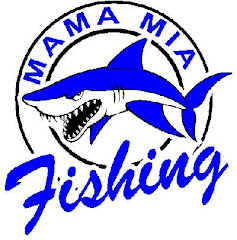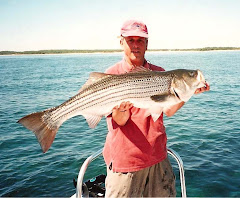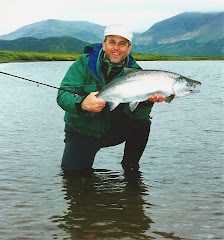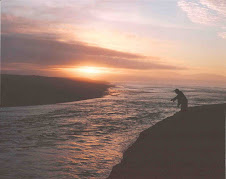 I first visited Grand Lake Stream Maine in July 1988 and became as hooked on the region as were the fish I caught. My wife and I traveled to this destination as part of a summer road trip that included sightseeing and fishing. While the tourist part of the trip was most enjoyable, the fishing was nothing short of spectacular, especially for smallmouth bass. Our mid-summer adventure did not necessarily coincide with peak spring and fall smallmouth fishing, but you could have fooled me. No matter where we ventured, we caught bass, and lots of them. Most were fish in the 1-½ to 2-pound class but there were enough quality fish in the 3 and 4-pound range to keep me on my toes after each cast. We fished for five days and literally lost count of bass that certainly numbered in the hundreds. I have been back this region many times since and often refer to the area’s fishery as a smallmouth bass factory. And if the smallies aren’t enough to keep you occupied, Grand Lake Stream proper is home to some exciting fishing for landlocked salmon.One of my favorite bass fishing spots is the St. Croix River, bordered by Maine on one side of the river and Canada on the opposing bank. I would always begin and end my trips to this region with a float on the St Croix. Nothing quite beats the aesthetics of fishing the St Croix in a traditional Grand Laker canoe and enjoying a timeless Maine shore lunch. The upper reaches of the St Croix hold some very magical smallmouth waters and prolific populations of fish. Flies, small plugs and any assortment of plastic baits work wonders on those river bass. But the St. Croix is far from the only game in town. Grand Lake is a classic Down East smallmouth bass water, replete with boulders, shoreline structure, coves, creek inlets and deep water holding areas. For a taste of Maine “wilderness” fishing, Third Lake Machias can’t be beat. It is one of a chain of Machias Lakes that includes First Lake through Fifth Lake. All Machias lakes are wonderful and productive places to fish; Third Lake has yielded some of the best dragon fly-fishing for smallmouth bass I have ever experienced. During the course of my visits I have also been treated to day expeditions to other places like Pocomoonshine Lake, Big Lake, East Lake, West Lake and Long Lake. I have never been disappointed by the outcome on any of the area’s waters.The smallmouth season typically begins in late May as the air and water temperatures steadily increase and become more consistent. The pre-spawn and post-spawn bass fishing can be as good as it gets anywhere, with 50 to 100 fish days not that uncommon. The month of June offers high quality finest top water smallie fishing with popping bugs or topwater plugs. The fishing remains productive throughout the summer months with flies and a variety of artificial baits quite effective. The season runs through September, a month known for fast action and big fishThis region is one of four in Maine that have native populations landlocked salmon - cousin the mighty Atlantic salmon. One major difference between the landlocked salmon and its larger relative is that the landlocked salmon are actively feeding while in the Stream during the summer. The season for the salmon begins early May after the ice leaves our lakes and they follow the smelt, a favorite forage fish, into Grand Lake Stream. Not long after the white suckers move it to spawn another wave of salmon targeting the sucker eggs follows. Late May and June bring the May fly and caddis hatches, followed by alder flies, stoneflies and other terrestrials in July. Typically during mid-summer the salmon move to the deep pools or into the lakes to feed, only to return in late September and October to spawn. We fish until October 20 and experience tremendous fishing for large salmon in the spawning dress during this time.Your best choice for a base of operation for your Grand Lake Stream adventure is Weatherby’s, an outstanding historic lodge situated in the heart of town. Weatherby’s offers central access to some unique landlocked salmon fishing and is a hub location for spring boarding to the areas unsurpassed smallmouth bass fishing. The lodging, food and hospitality are second to none and Weatherby’s also boasts one of the most professional cadre of skilled guides available anywhere. The lodge is one of the oldest and most famous fishing destinations in North America. Many famous visitors have stayed and played outdoors using Weatherby’s as a their home base, including the “splendid splinter” himself, Ted Williams.Weatherby’s is also an excellent destination upland game hunting. The area is renowned for woodcock or “timberdoodle” shooting.
I first visited Grand Lake Stream Maine in July 1988 and became as hooked on the region as were the fish I caught. My wife and I traveled to this destination as part of a summer road trip that included sightseeing and fishing. While the tourist part of the trip was most enjoyable, the fishing was nothing short of spectacular, especially for smallmouth bass. Our mid-summer adventure did not necessarily coincide with peak spring and fall smallmouth fishing, but you could have fooled me. No matter where we ventured, we caught bass, and lots of them. Most were fish in the 1-½ to 2-pound class but there were enough quality fish in the 3 and 4-pound range to keep me on my toes after each cast. We fished for five days and literally lost count of bass that certainly numbered in the hundreds. I have been back this region many times since and often refer to the area’s fishery as a smallmouth bass factory. And if the smallies aren’t enough to keep you occupied, Grand Lake Stream proper is home to some exciting fishing for landlocked salmon.One of my favorite bass fishing spots is the St. Croix River, bordered by Maine on one side of the river and Canada on the opposing bank. I would always begin and end my trips to this region with a float on the St Croix. Nothing quite beats the aesthetics of fishing the St Croix in a traditional Grand Laker canoe and enjoying a timeless Maine shore lunch. The upper reaches of the St Croix hold some very magical smallmouth waters and prolific populations of fish. Flies, small plugs and any assortment of plastic baits work wonders on those river bass. But the St. Croix is far from the only game in town. Grand Lake is a classic Down East smallmouth bass water, replete with boulders, shoreline structure, coves, creek inlets and deep water holding areas. For a taste of Maine “wilderness” fishing, Third Lake Machias can’t be beat. It is one of a chain of Machias Lakes that includes First Lake through Fifth Lake. All Machias lakes are wonderful and productive places to fish; Third Lake has yielded some of the best dragon fly-fishing for smallmouth bass I have ever experienced. During the course of my visits I have also been treated to day expeditions to other places like Pocomoonshine Lake, Big Lake, East Lake, West Lake and Long Lake. I have never been disappointed by the outcome on any of the area’s waters.The smallmouth season typically begins in late May as the air and water temperatures steadily increase and become more consistent. The pre-spawn and post-spawn bass fishing can be as good as it gets anywhere, with 50 to 100 fish days not that uncommon. The month of June offers high quality finest top water smallie fishing with popping bugs or topwater plugs. The fishing remains productive throughout the summer months with flies and a variety of artificial baits quite effective. The season runs through September, a month known for fast action and big fishThis region is one of four in Maine that have native populations landlocked salmon - cousin the mighty Atlantic salmon. One major difference between the landlocked salmon and its larger relative is that the landlocked salmon are actively feeding while in the Stream during the summer. The season for the salmon begins early May after the ice leaves our lakes and they follow the smelt, a favorite forage fish, into Grand Lake Stream. Not long after the white suckers move it to spawn another wave of salmon targeting the sucker eggs follows. Late May and June bring the May fly and caddis hatches, followed by alder flies, stoneflies and other terrestrials in July. Typically during mid-summer the salmon move to the deep pools or into the lakes to feed, only to return in late September and October to spawn. We fish until October 20 and experience tremendous fishing for large salmon in the spawning dress during this time.Your best choice for a base of operation for your Grand Lake Stream adventure is Weatherby’s, an outstanding historic lodge situated in the heart of town. Weatherby’s offers central access to some unique landlocked salmon fishing and is a hub location for spring boarding to the areas unsurpassed smallmouth bass fishing. The lodging, food and hospitality are second to none and Weatherby’s also boasts one of the most professional cadre of skilled guides available anywhere. The lodge is one of the oldest and most famous fishing destinations in North America. Many famous visitors have stayed and played outdoors using Weatherby’s as a their home base, including the “splendid splinter” himself, Ted Williams.Weatherby’s is also an excellent destination upland game hunting. The area is renowned for woodcock or “timberdoodle” shooting.For further information about accomodations, seasons and rates visit the lodge's website at www.weatherbys.com .

















